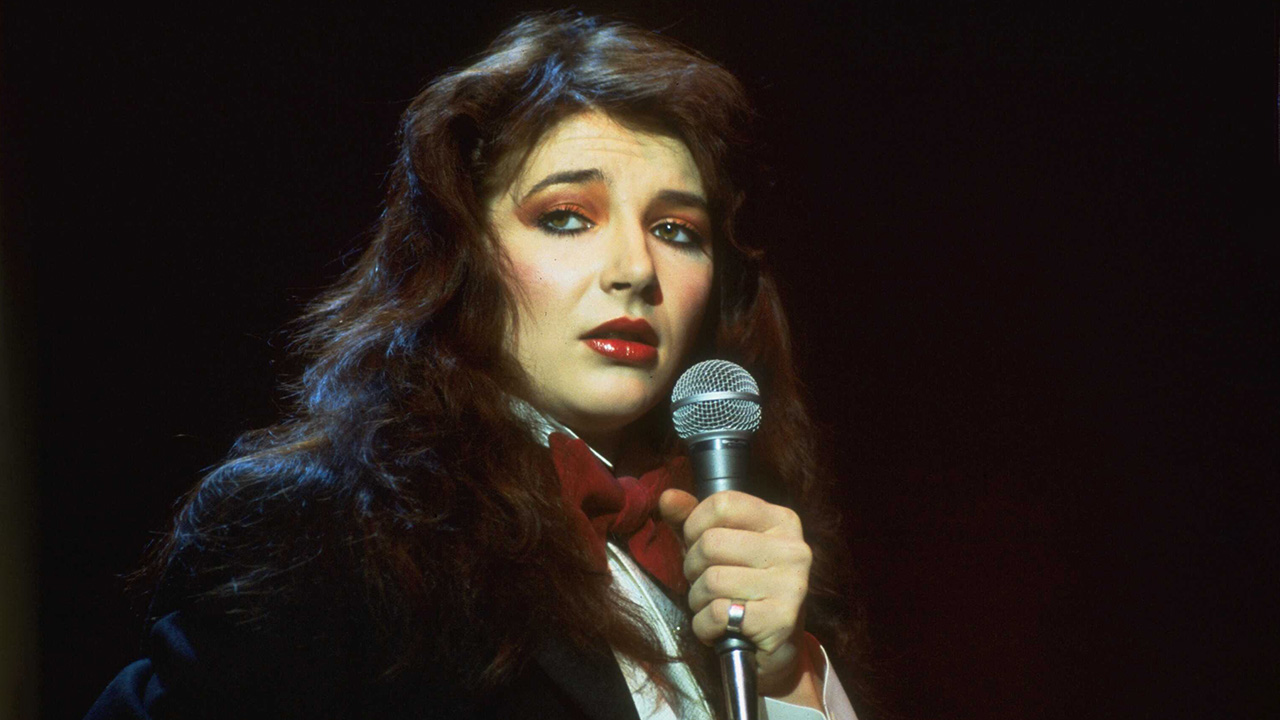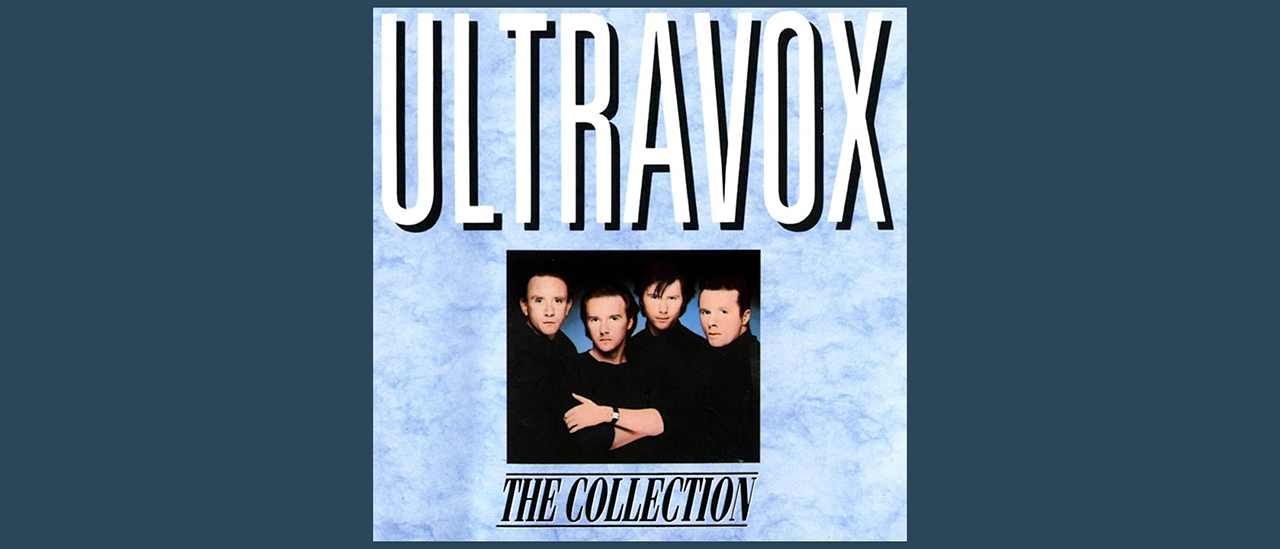“I caved in and said: ‘Okay, I’ll put out Wuthering Heights, if only to teach you not to interfere with our choices’”: The decisions and coincidences that helped make Kate Bush a superstar
Signed around the same time as the Sex Pistols after David Gilmour mentored the 16-year-old’s “remarkable talent,” a durable paradox emerged

Kate Bush seems to have always been there, so it’s easy to forget how young she was when she first hit the scene. Prog tracked the birth of a superstar in 2011.
One afternoon in the mid-70s, David Gilmour of Pink Floyd decided to play one of the many demo tapes he received each week. This one had been given to him by Ricky Hopper, a friend of his and of the family of the artist. Although the quality of the recording was poor, Gilmour discerned something special within it.
“The songs were too idiosyncratic,” he remembered, talking to Jason Cowley of The New Statesman in 2005. “It was just Kate Bush, this little schoolgirl who was maybe 15, singing away over a piano. You needed decent ears to hear the potential, and I didn’t think there were many people with those working in record companies. Yet I was convinced from the beginning that this girl had remarkable talent.”
He got Bush into a studio and assisted in the recording of more demos, with Andrew Powell – a Cambridge friend who’d worked with Henry Cow, Cockney Rebel and The Alan Parsons Project – producing. Three songs, including The Man With The Child In His Eyes, were then presented to EMI. They weren’t averse to listening to anything recommended by Gilmour, who’d made them a few quid in his time.
They signed the young woman instantly. One of the great careers in British music history was about to burst into life. But not quite yet: EMI put Bush on a retainer with an advance for two years, feeling that if her music didn’t take off, she’d be too young to handle it. And if it did take off... she’d be too young to handle it.
Born in Bexleyheath, Kent, in 1958, Kate Bush was daughter to an English physician (and pianist) father and an Irish ex-folk- dancer mother. She was raised in their East Wickham farmhouse with her two older brothers John and Paddy, both involved in the local folk music scene.
Kate was singing along with their rehearsals by the age of six. She was teaching herself piano by 11, soon studied violin and began writing songs in the barn behind the family’s house. She also learned karate. One of her instructors later said he saw some of what she’d learned in her dance moves.
Sign up below to get the latest from Prog, plus exclusive special offers, direct to your inbox!
By the time she was at a Catholic girls’ school in Abbey Wood, her family were encouraging her to collect her songs on demos. She was extraordinarily prolific. Over 50 songs made their way to Gilmour. “Things really started to happen when she was 15 or 16,” said brother John Carder Bush – later her business manager, visual director, photographer and even bodyguard. “Though she had to think about her O-levels.”
(John’s friend Julie Covington, star of then hit TV show Rock Follies and a chart-topper with Don’t Cry For Me Argentina, had helped finance the life-changing demos.)
EMI had signed young Catherine Bush – with their progressive rock titan as mentor – just as punk was about to break. Former MD Bob Mercer recalled: “We’d just signed up the Sex Pistols. And here we were trying to develop this young artist, this very sweet young creature, who was about as diametrically opposed to the punk ethic as it was possible to be.” Others at EMI were baffled by his and Gilmour’s championing of the girl. Yet Mercer stuck to his guns, at least until it was time for her debut single.
He chose James And The Cold Gun. Kate wanted Wuthering Heights. There was a showdown in his office. “I fixed her with my sternest avuncular stare,” he told journalist Johnny Black in 2006. “I carefully explained that it was her job as the artist to make the music, but it was up to us with our superior knowledge of marketing and public taste to decide what single to put out.”
Kate’s strategy was to burst into tears. It worked. “I had no way of dealing with that,” admitted Mercer. “I caved in, and said: ‘Okay, I’ll put out Wuthering Heights, if only to teach you not to interfere with our choices.’ A few weeks later, of course, it was Number One.”
She was very nervous, but once she was on, she was fine
Vic King
Gilmour too has said, “When I first met Kate she was this shy little schoolgirl, but very quickly you could see that she’d have arguments with producers if they didn’t do things the way she wanted them to.” The success of Wuthering Heights gave her the subsequent creative freedom that’s made her oeuvre what it is.
She wasn’t there just yet, though – she was broadening her interests, absorbing inspiration from the realms of classical music, cinema and literature. Still studying, she spent much of her EMI advance on dance lessons with the flamboyant Lindsay Kemp. The dancer’s unorthodox interpretative stylings, of course, had already intrigued David Bowie, who he’d coached in techniques like mime.
Bush also studied mime with the highly acclaimed American choreographer Adam Darius, and some of these techniques were to prove useful, or at least diverting, in her early live performances.
After much rehearsal in the barn, The KT Bush Band graced the public houses of London over the spring and summer of 1977, most frequently The Rose Of Lee in Lewisham. Her band consisted of Del Palmer – who became her long-term bassist, collaborator and, for years, partner – with guitarist Brian Bath and drummer Vic King. Kate wanted to give the band “some strange name,” King has recalled. When he suggested The KT Bush Band, her reaction was: “Oh no, that’s terrible!” (Once again, Kate’s gut reactions were correct).
Nonetheless, out strode The KT Bush Band, and after a daunting first night (the band’s fee was a meagre £27), subsequent shows were packed to the rafters. “She was very nervous,” said King, “but once she was on, she was fine.” Many of the songs for the debut album were honed in this context. Perhaps the less said about an attempt to re-brand Ike & Turner’s Nutbush City Limits as Kate Bush City Limits, the better. “That,” King has said, “didn’t quite work.”
As she grew in confidence, acting out characters and embracing a dry ice machine and costumes, kinks were ironed out. It was time to record The Kick Inside. Although her KT Bush Band-mates were brought back later, for the crucial sessions she was persuaded to use established musicians. Gilmour himself was credited as executive producer on The Man With The Child In His Eyes and The Saxophone Song, while his ally Powell produced the album. Among the guesting players were David Paton (Pilot, Alan Parsons Project), Ian Bairnson and Stuart Elliott (Alan Parsons Project) and Duncan Mackay.
Although she was 19 when the album came out, some of these songs had been written when she was as young as 13. Moving, the opener, was inspired by Lindsay Kemp. Them Heavy People references Armenian philosopher George Gurdjieff. Many of the songs are openly frank about sexuality and sensuality, not least Feel It and L’Amour Looks Something Like You. There’s a quite astonishing, almost frightening breadth, range and candour across the material; the melodies entice and delight. The voice, while still helium–high enough to motivate a generation of lame parodists, is a thing of startling beauty.
Released in February 1978 (she was by then deemed old enough to handle it) The Kick Inside soared to Number Three, just a fortnight after the Sex Pistols’ final gig. The flames of its success were fanned by the unanticipated, still-unique phenomenon that was Wuthering Heights – famously among the one-time Johnny Rotten’s favourite songs. With two videos (one for the UK, one for the US) utilising those karate and ballet-inspired dance moves, it was Number One for four weeks and made Kate Bush a star.
The media just promoted me as a female body. People weren’t even aware I wrote my own songs or played the piano
Kate Bush
Initially, the single had been set for a November release (some copies were leaked to radio), but after Bush insisted the cover picture be replaced, it was held back to the new year. Again, this worked out well, as otherwise it would have been buried beneath the Wings megalith Mull Of Kintyre, at that stage the biggest-selling single in British history. Hers was the first UK chart-topper to be self-written by a female. She later revealed that her song was inspired by the final scenes of the 1970 film version of Emily Brontë’s book: she read the novel afterwards. That she shared her birthday with Brontë felt significant to her.
The song, quoting Catherine Earnshaw, the novel’s protagonist, was written in a few hours, late at night. While some still cite Gilmour as the guitarist playing the solo, it was actually played by Ian Bairnson. Gilmour was naturally delighted by his protégée’s success. “Kate is a complete one-off,” he said a few years ago. “I can’t think of anyone like her. Joni Mitchell was also a one-off, an original, but Kate is nothing like that.”
Suddenly aware that its investment had made sense and that it owned a hot property, EMI wanted to capitalise by speeding things along. The Man With The Child In His Eyes had won Kate an Ivor Novello award for songwriting, but had also seen a video which played up the singer’s sexual attractiveness. Posters and photos adopting the same tactics followed, making much of a flesh-coloured bodysuit. It was as if nobody had listened to the music and learned this wasn’t a customary case of bubbly pop starlet. (At the same time Debbie Harry of Blondie experienced similar retro-thinking.)
As John Carder Bush put it, “It was the brain and not the body that was Kate’s real quality.” Bush herself said: “The media just promoted me as a female body. People weren’t even generally aware that I wrote my own songs or played the piano.”
The follow-up album, Lionheart, was rushed out in late ’78, just nine months after The Kick Inside. It was recorded in Nice (to this day the only Bush album wholly recorded outside the UK). Kate has said she wished she’d had more time to work on it. She may also regret wearing the lion suit on the cover. Again produced by Andrew Powell (with Bush), and using the same group of musicians, it made less impact than her debut, reaching Number Six, while delivering a hit with Wow and a near-miss with Hammer Horror.
Yet it’s a beautiful, deeply affecting album, full of delicately yearning, plangent songs. And it overflows with references to English eccentricity and whimsy – meaning it shares a happy kinship with much classic prog. World War Two pilots, JM Barrie’s Peter Pan, Hammer’s scary movies, even TV cop show The Sweeney – they’re all there. It’s also the first album to feature Del Palmer on bass: he’s been involved with every album since [he died in 2024].
Now Kate was shunted out on a six-week live outing, The Tour Of Life, from April 1979. “It was utterly exhausting – and utterly successful,” said John Carder Bush. Even Kate, who afterwards vowed never to tour again, admitted: “The reactions really surprised me – it was lovely, and the greatest encouragement I could have possibly had.” The experience was blighted, however, by the death lighting technician Bill Duffield in an accident on the first night.
The shows themselves have entered rock lore. After intense rehearsals, Kate wanted to incorporate dance, props, magic, and 17 costume changes: “something special.” As she’d frequently be lifted by dancers, she needed a microphone she didn’t have to hold. “So my sound guy basically invented the radio mics you see nowadays,” she said. “He made it out of an old coat hanger, which he bent into shape.”
The tour triumphed, though reviews ranged from “her unabashed obsession with sex” to “you’re distracted by Katy being wheeled around in a giant satin-lined chocolate box.” Others praised “a dazzling testimony to a remarkable talent” and “the best welding of rock and theatrical presentation that we’re ever likely to see.”
We need more people like her, especially as so much music amounts to little more than formulaic copying of genres
David Gilmour
She baulked again at the over-emphasis on her sexuality, and began to loathe anything that fell under the banner of promotion. With her family, she took control of her business affairs, producing her next EP (Live On Stage) alone, and then the 1980 album Never For Ever. This, yielding the hit singles Babooshka and Army Dreamers, was to be her first Number One album, and the first by any British female artist.
A durable paradox emerged: the more she distanced herself from public life, the more the public were intrigued by this individual, idiosyncratic, influential talent. As David Gilmour has proclaimed: “We need more people like her, especially as so much music amounts to little more than formulaic copying of genres. Those who have followed in her shadow are but pale imitations.”
Chris Roberts has written about music, films, and art for innumerable outlets. His new book The Velvet Underground is out April 4. He has also published books on Lou Reed, Elton John, the Gothic arts, Talk Talk, Kate Moss, Scarlett Johansson, Abba, Tom Jones and others. Among his interviewees over the years have been David Bowie, Iggy Pop, Patti Smith, Debbie Harry, Bryan Ferry, Al Green, Tom Waits & Lou Reed. Born in North Wales, he lives in London.





